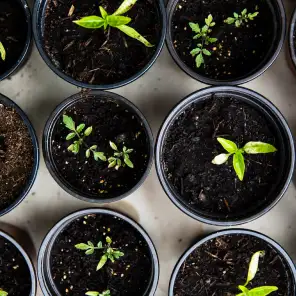It’s a common narrative that factory farming—despite animal cruelty, environmental destruction, and human health impacts—has net positives that make it an important part of society, especially in rural America. It provides affordable meat to our populations, creates jobs in small towns, stimulates local economies, and helps families prosper.
This narrative has made it easy for the meat industry to create a false dichotomy that pits people against animals: “Do you care more about a pig than my family’s livelihood?”
It’s now been decades with factory farming as the dominant industry, but have rural communities actually experienced their purported economic benefits? Has factory farming made life easier for the people in small towns?
A 2022 report by Food and Water Watch suggests the opposite. The report takes pig farms in Iowa as a case study of how our corporate-controlled food systems are failing environments, animals, and communities.
Until the late 20th century, most pigs were raised for food on family farms. But, a combination of government policies in the 1970s and grain price crashes in the 1980s resulted in Iowa losing almost 90% of its pig farms over three decades as small-town farmers struggled to stay economically viable.
Meanwhile, across the state, the behemoth of controlled animal feeding operations—facilities that raise thousands of animals in extreme confinement to maximize production and profit—began to rise.
These factory farms—operated by multibillion-dollar corporations like Smithfield and JBS—now dominate the meat market. These facilities control the food going into our restaurants, like Dunkin Donuts, Sonic, Bob Evans, Ingles Market, and Cracker Barrel, as well as our schools, hospitals, and stadiums from food service providers like Sodexo and Compass Group.
In 1980, the top four pig farm firms slaughtered one out of every three U.S. pigs. That market share has now doubled. At the local level, Food and Water Watch found that these companies have an even tighter grip on the market, with the top four firms slaughtering 9 of 10 Iowa pigs between 2004 and 2011.
Factory farms use this dominance to set the terms for pig prices, preventing fair pricing, contributing to market volatility, and pushing down the real price of pigs.
The fact that these enormous corporate firms and their equally enormous factory farms control the market is irrefutable. But are they at least providing more jobs on the ground for the community? Despite years of claiming the contrary, the answer is straightforward: absolutely not.
The study found that between 1982 and 2017, real median household income and total wage jobs declined in the counties that sold the most pigs and had the largest farms. The population also took a steep drop, at twice the rate of Iowa’s more rural counties. Job losses, too, were commonplace. Statewide, total farm employment dropped 44% between 1982 and 2017—the boom years for factory farming.
The results of this study are clear: Factory farming is bad for the economy, driving up the price of pigs without returning profits to local farmers. It puts local farms out of business and results in net job loss. Families suffer hardship as incomes decline, and property values diminish due to rampant pollution from factory farms.
On top of this, it ensures that factory-farmed pigs grow up and die in misery, while our climate catastrophe worsens, human health deteriorates, and local communities suffer.
Not only does meat consumption increase the risk of developing heart disease, diabetes, pneumonia, and more, the meat industry’s routine use of antibiotics to protect their bottom line results in antibiotic resistance in both farmed animals and the people who eat them.
According to the World Health Organization (WHO), at least 700,000 people die each year from antibiotic-resistant infections—a number that could soar to 10 million by 2050. Who are factory farms good for? Large corporations, which continue to sell us the lie that we need them.
Corporate factory farms threaten that, if they can’t maintain their monopoly over the industry, the small towns they operate in will lose jobs and economic prosperity. This is simply misinformation. Factory farms are not good for anyone, especially local communities that exist in their shadows.
But, not all hope is lost. When we advocate for small farmers using more sustainable agriculture, plant-based agriculture, and cell-based technology, new vistas open up for a more just food system.
This food system would be better for our planet, allowing us to recover from years of agriculture-driven pollution and deforestation, and good for people, too. Smaller farms that treat animals humanely could prosper. Food and agriculture projects could be led by and for the people in their communities.
Let’s demolish the boxing ring the meat industry built—one that positions people and animals as opponents, instructing us to support one side by brutalizing the other. But factory farming—and its corporate chokehold on rural communities—is just as brutal to humans as it is to animals.
We need to put pigs and people back where they belong—on the same side.


